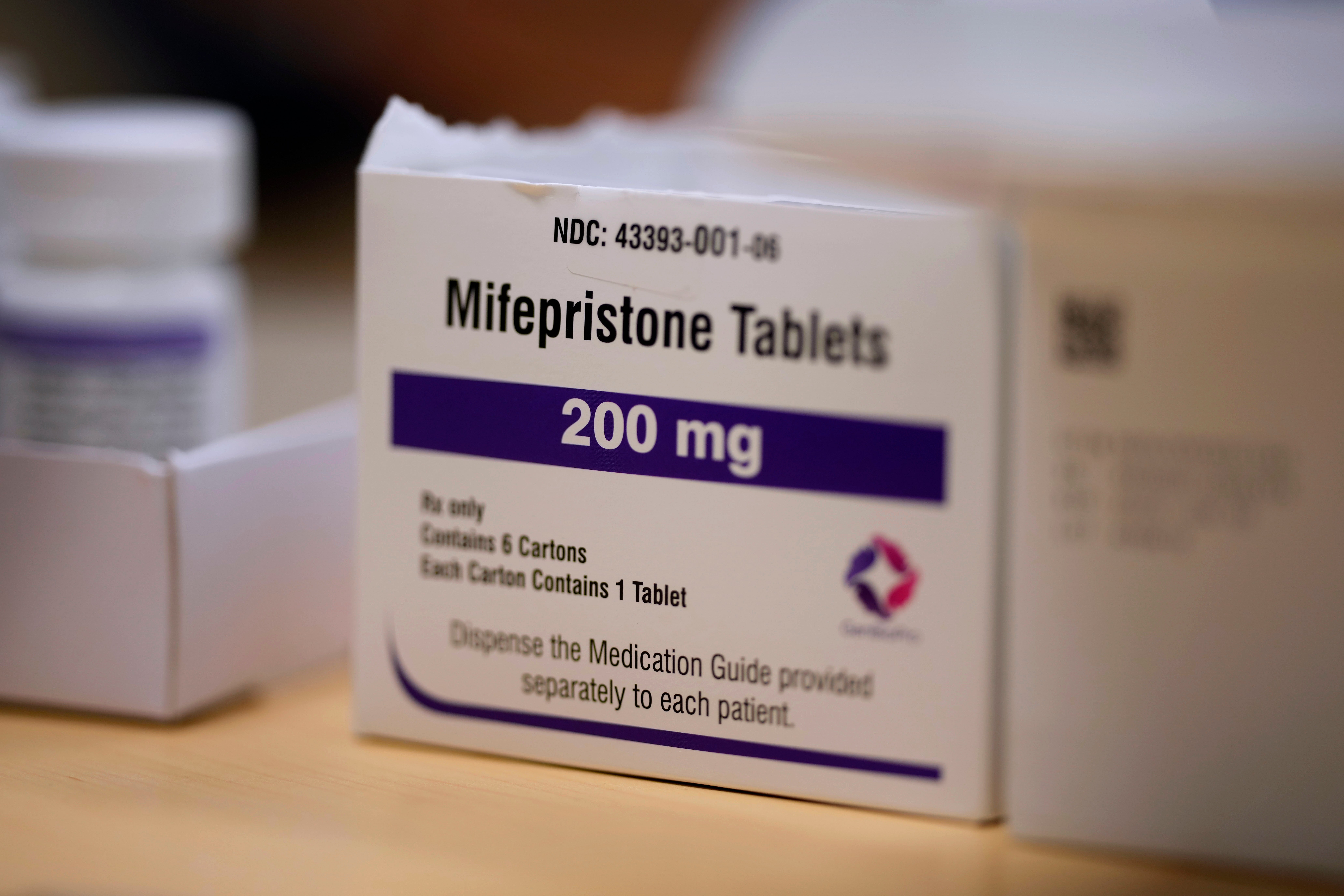The abortion pill mifepristone, used in the majority of U.S. abortions, faces an uncertain future under the new Republican administration.
President Donald Trump’s pick for Food and Drug Administration (FDA) commissioner, Dr Marty Makary, was confirmed on Tuesday by the Senate.
Makary has declined to specify his stance on the drug during recent Senate health committee hearings, leaving many wondering about potential restrictions.
Mifepristone, often used with misoprostol in medication abortions, accounts for nearly two-thirds of abortions nationwide.
While medical experts consider it "among the safest medications" approved by the FDA, a Christian conservative group alleges it has caused "tens of thousands" of "emergency complications."
Here is what to know about mifepristone and its status.

What are the safety limits on the use of the abortion pill?
The FDA approved mifepristone in 2000 for terminating early pregnancies. Initially, strict safety protocols were in place due to the rare risk of excessive bleeding. These included mandatory in-person appointments and distribution limited to certified physicians. Current regulations, however, permit mifepristone to be dispensed via mail without in-person requirements. The future of these regulations remains unclear under the new administration.
The doctors also had to be capable of performing emergency surgery to stop excess bleeding and an abortion procedure if the drug didn’t end the pregnancy.
Over time, the FDA reaffirmed mifepristone’s safety and repeatedly eased restrictions.
How often are there serious problems?
Abortion opponents say the FDA’s 2021 decision allowing online prescribing and mail-order use of mifepristone resulted in many more “emergency complications.”
But that argument lumps together women experiencing a range of issues — from mifepristone not working to people who may simply have questions or concerns but don’t require medical care.
OB-GYNs say a tiny fraction of patients suffer “major” or “serious” adverse events after taking mifepristone.

A legal brief filed with the Supreme Court in 2024 by a group of medical organizations including the American College of Obstetricians and Gynecologists says: “When used in medication abortion, major adverse events — significant infection, excessive blood loss, or hospitalization — occur in less than 0.32% of patients, according to a highly regarded study with more than 50,000 patients.”
The definition that scientists generally use for serious adverse events includes blood transfusions, major surgery, hospital admissions and death, said Ushma Upadhyay, one of the authors of that 2015 study.
The prescribing information included in the packaging for mifepristone tablets lists slightly different statistics for what it calls “serious adverse reactions.” It cites ranges for how frequently various complications occur: 0.03 per cent to 0.5 per cent for transfusion; 0.2 per cent for sepsis and 0.04 per cent to 0.6 per cent for hospitalization related to medication abortions. The ranges reflect findings across various relevant studies, experts said.
Why do patients go to the emergency room?
Mifepristone’s labeling lists a complication that most medical groups don’t consider a serious or major adverse event: ER visits, which ranged from 2.9 per cent to 4.6 per cent. The current FDA label lists going to the ER as an option if patients experience prolonged heavy bleeding, severe abdominal pain or a sustained fever. But ER visits don’t always reflect big problems.
Some people may go there after a medication abortion because they want to be checked out or have questions but don’t have a doctor, said Upadhyay, a public health scientist at the University of California, San Francisco. Others, she said, “don’t want to go to their primary care provider about their abortion” because of stigma.
A study she co-authored in 2018 found that slightly more than half of patients who visited the ER because of abortions received only observational care.

How effective is the pill?
Mifepristone results in a completed abortion 97.4 per cent of the time, according to U.S. studies cited in the FDA label.
But in 2.6 per cent of cases, a surgical intervention is needed. And 0.7 per cent of the time, the pregnancy continues.
That’s compared to a procedural abortion in a clinic, where the chance of the procedure failing to end a pregnancy “is extremely, extremely low,” probably less than 0.1 per cent, said Dr. Pratima Gupta, a board member for the American College of Obstetricians and Gynecologists.
“Any time a procedural abortion is done, the clinicians ensure that it was a complete abortion” by examining the tissue that is removed or performing an ultrasound during or after the procedure, she said.
Gupta, who has done abortion procedures for more than 20 years, said there are “very few complications from abortion — any kind of abortion, medication or procedural abortion.”
One study suggested that’s just as true for medication abortions that happen in a clinic, a doctor’s office or at home with the help of telehealth.
How does mifepristone’s safety and effectiveness compare to other drugs?
The FDA makes drug approval decisions on a case-by-case basis, weighing effectiveness, safety and other factors.
No drug is 100 per cent effective, and many common medications don’t work for a significant portion of patients.
Antidepressants typically help between 40 per cent and 60 per cent of people with depression. New antibiotics approved by the FDA often resolve about 70 per cent of infections.
Since 2000, roughly 6 million patients have taken mifepristone, according to the FDA. A 2021 review of agency records looking for deaths that were likely related to the drug identified 13, or 0.00027 per cent of patients.
Medical organizations supporting mifepristone’s availability say the drug’s safety, given the rate of deaths, compares to “ibuprofen, which more than 30 million Americans take in any given day.”
Trump claims ‘billionaires on the left’ partly to blame for violence against Tesla
Trump news live updates: Journalist reveals attack plans shared in group chat
ICE arrests Tufts University doctoral student and revokes her visa, school says
Signal chats about Yemen published in full
JD and Usha Vance had changed their Greenland itinerary. Denmark is relieved
Former US attorney Jessica Aber’s cause of death is revealed by authorities







